The DRAGON is a medium-range, wire-guided antitank missile that is light enough to be carried and fired by a single infantryman. Because of its lethal striking power, the DRAGON can destroy most armored vehicles and reinforced battlefield targets. Its light weight makes the DRAGON particularly desirable in airborne and airmobile operations. The DRAGON was first deployed in 1975.
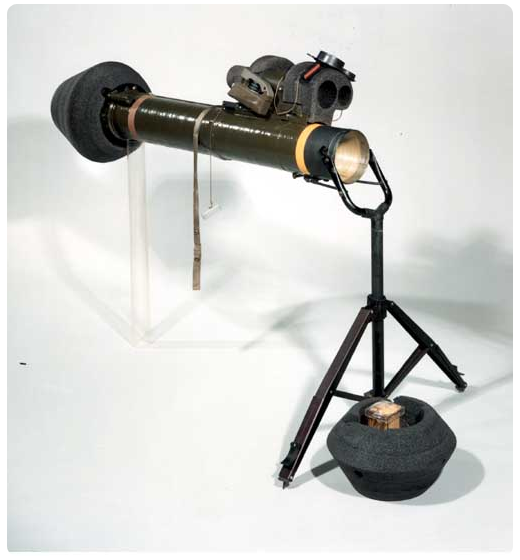
System Chronology
|
July - September 59 U.S. Army Ordnance Missile Command (AOMC) suggested the development of a medium-range heavy assault weapon. The Office, Chief of Research and Development indicated that no firm requirement existed for the weapon. September 61 U.S. Army Ballistic Missile Agency (ABMA) recommended the development of a heavy antitank weapon based on a Douglas Aircraft Company proposal. 8 March 62 Continental Army Command (CONARC) issued developer guidance for a manportable, shoulder-fired medium antitank/assault weapon system. 15 May 62Office, Chief of Ordnance (OCO) issued medium antitank weapon (MAW) directive which assigned overall project responsibility to the Ballistic Research Laboratory (BRL). September - October 62 BRL transferred funds to MICOM for the fabrication and testing of the Douglas MAW. October 62 BRL released a qualitative development requirements information (QDRI) document on the MAW. November 62 BRL solicited industrial proposals for the MAW concept; 19 received. May - November 63 Combat Developments Command (CDC) study concluded that a family of weapons including the MAW was needed. July 63 BRL completed the evaluation of the QDRI proposals for the MAW. Recommended that the McDonnell Douglas concept be studied further through an exploratory development contract. November 63 AMC directed MICOM to proceed with the McDonnell Douglas MAW and work with BRL on MICOM's own directional control (DC) concept. 31 August 64 Contract signed with McDonnell Douglas for a 12-month exploratory development effort to demonstrate the feasibility of its command guidance concept of a 1,000-meter medium assault weapon. September 64 DC-MAW exploratory development program began in-house at MICOM. 1 April 65 MAW Project Office was established. It was fully operational by 1 July 65. September 65 Dual exploratory program (McDonnell Douglas and MICOM DC-MAW) was completed. 8 October 65 The McDonnell Douglas MAW evaluated as the concept which best met the technical requirements. 10 November 65 MICOM Deputy Commanding General (DCG), Land Combat Systems directed the DC-MAW program be reoriented to a direct control light antitank weapon (LAW). 25 February 66 McDonnell Douglas was awarded an engineering development contract. 3 March 66 Chief of Research and Development, DA, approved the development of the McDonnell Douglas MAW. 1 September 66 McDonnell Douglas received a letter contract to begin basic engineering development for the MAW. This contract was definitized on 30 November 66. 10 March 67 DOD officially approved DRAGON as the popular name for the MAW. Project office name also changed. 16 June 67 The first unguided DRAGON missile was launched at Cape Canaveral October 67 The first system integration test for the DRAGON was conducted. 2 October 67 McDonnell Douglas received a letter contract to maintain the program schedule while the production proposal was being evaluated. 8 December 67 The first unmanned guided DRAGON flight test was successfully conducted at Redstone Arsenal 15 March 68 Avion Electronics, Inc., received a sole source contract for design studies and hardware fabrication of a thermal night sight for the DRAGON. June 68 During tracking tests for the DRAGON, a gunner for the first time held the launch tube and initiated the firing sequence. 28 June 68 The production contract for the DRAGON was awarded to McDonnell Douglas, replacing the 2 October 67 letter contract. 5 July 68 The first manned guided flight test against a stationary target was successfully conducted at Redstone Arsenal. September 68 Philips Broadcasting Corporation was awarded a contract to design, fabricate, and test a pre-prototype DRAGON thermal night sight. 19 September 68 The first manned guided DRAGON flight test against a moving target was successfully conducted. November 68 Assistant Secretary of the Army for Research and Development authorized full-scale night sight engineering development based on a competition between Philips Broadcasting and Westinghouse Corporation. May 70 Philips and Westinghouse were awarded contracts for DRAGON night sight preliminary design and development. 1 May 70 Army Chief of Staff approved the master program schedule for the DRAGON. 30 September & 30 October 70 Production pilot lines for the DRAGON round (launcher and missile) and tracker, respectively, were established. February 71 The first research and development prototype of the DRAGON night sight was completed. 20 April-3 June 71 Both the thermal imaging and image intensifier night sights successfully underwent manned guided flights. 14 May 71 A Blue Ribbon Panel reported on the system design and the production of the design DRAGON round, and recommended that the DRAGON program be continued. September 71 The thermal imaging night sight was chosen for development. November 71 The thermal imaging night sight entered engineering development. 19-20 January 72 The DRAGON was type classified limited production by a special in-process review. 29 February 72 The Army Chief of Staff, Force Development (ACSFOR) granted the limited production classification for DRAGON tests. 6 March 72 The initial production contract release for the DRAGON occurred. 18 April 72 Office of the Assistant Secretary of the Army, Installations and Logistics approved the advanced procurement plan for the DRAGON. The plan provided for the establishment of second source producers and competitive procurement of missile and trackers. 20 September 72 & 23 March 73 After a limited competitive solicitation of known qualified sources, two second source contracts were awarded. Firm-fixed-price (FFP) contracts were awarded to Raytheon for missiles and to Kollsman Company for trackers, respectively. 1973 McDonnell Douglas completed work under the DRAGON engineering development contract. February 73 ASARC and DSARC held resulted in the type classification of Standard A for the major portion of the DRAGON system and approval to continue production. Official nomenclatures were also assigned. 1974 McDonnell Douglas began deliveries of DRAGON production hardware during the year. 5 June 74 The Materiel Review Board recommended that all DRAGON hardware be released. January 75 The first U.S. Army, Europe (USAREUR) unit was equipped. This was the first tactical deployment of the DRAGON. March 75 The first DRAGON unit became operational in Europe, 1 month in advance of the scheduled initial operational capability date. 31 July 75 Contracts were awarded in a 60/40 percent procurement for DRAGON trackers to McDonnell Douglas, the prime contractor, and to Kollsman Instrument Company. A similar competitive procedure was used for the DRAGON rounds, with awards to McDonnell Douglas and Raytheon. 14 October 75 Acting Assistant Secretary of Defense (Installations and Logistics) approved Development Concept Paper 115A for the DRAGON. September 76 Multiyear production award competition conducted between McDonnell Douglas and the DRAGON second source contractors. 1 October 76 - 30 September 77 A total of 2,288 DRAGON rounds were test fired, achieving a reliability factor (less warhead) of 91 percent. 1977 The DRAGON deployments to Korea and the 82d Airborne Division were completed. 1977 McDonnell Douglas stopped producing DRAGON missiles. 29 September 77 The TOW and DRAGON Project Offices were combined. 1979 With the exception of two infantry brigades, the DRAGON deployment to FORSCOM and roundout National Guard units was completed. October 79 DA decided against an Improved DRAGON missile product improvement program. Decided to use funds to develop the Advanced Medium Antiarmor Weapon System (AMAWS), later known as the Infantry Manportable Antiarmor Assault Weapon System (IMAAWS), which was popularly known as the RATTLER. 1980 Raytheon stopped producing DRAGON missiles. 31 March 80 DARCOM approved MICOM's transfer of DRAGON management from the TOW/DRAGON Project Office. April 81 Deployment of the basic DRAGON missile system was completed. September 90 DRAGONs deployed to SW Asia for DESERT SHIELD/DESERT STORM. |
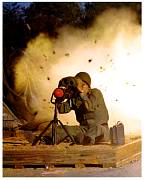
|
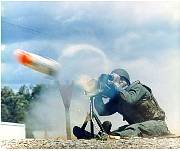
|
 dragon_03.jpg |
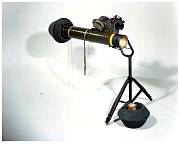
|
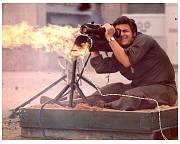
|
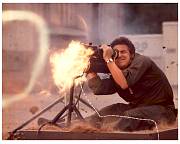
|
